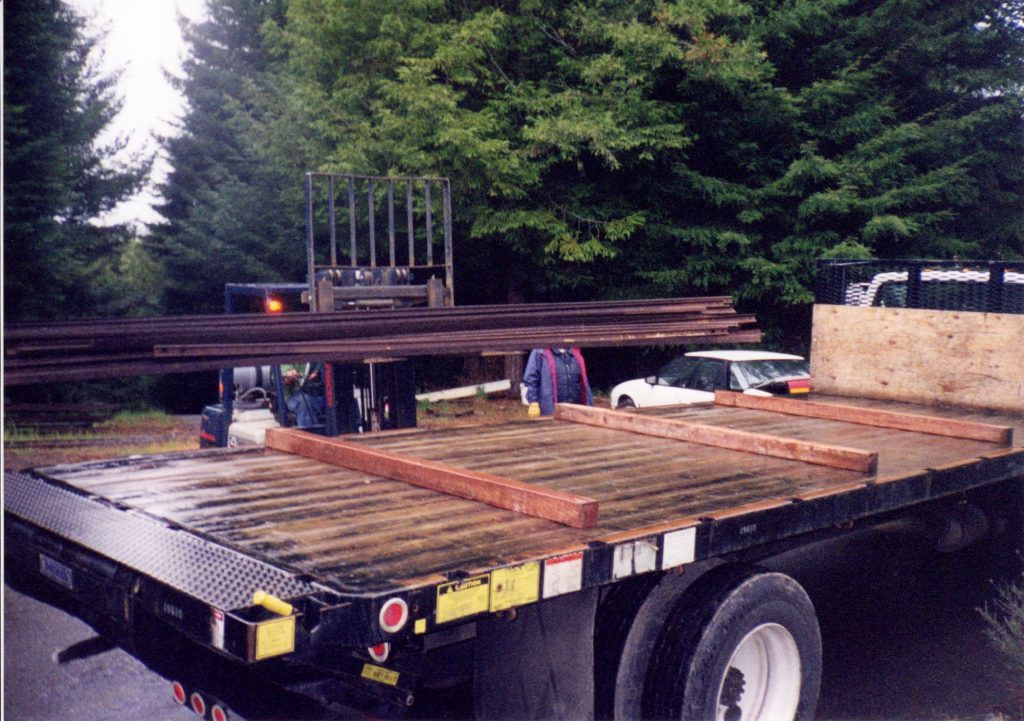1999 TRAIN PURCHASE
In March of 1999 Stephen saw an advertisement on a railroad broker’s website in North Carolina for the sale of the Argo Gold Mine 18″ gauge railroad train in Idaho Springs, CO. Stephen flew to Denver, rented a car, and drove to Idaho Springs to inspect the train. After returning home, and a period of negotiation, a purchase agreement was signed which included the purchase of the train, dismantling the track, and the transportation of the rolling stock, track, switches, and railroad ties to Stephen’s home near Alturas.


In the upper left photo is the Argo Gold Mine National Park. The tourist train was installed on the tailings pile to the right of the building. The train is shown parked on the track near the stamp mill.


The photo at the upper left shows a railroad car loaded on a truck for shipping to Alturas, and in the background you can see another truck coming down the hill with more train cars to be loaded. The photo on the right shows Stephen standing where the train was installed in Idaho Springs, CO. The water tower and Argo Stamp Mill can be seen over his shoulders.
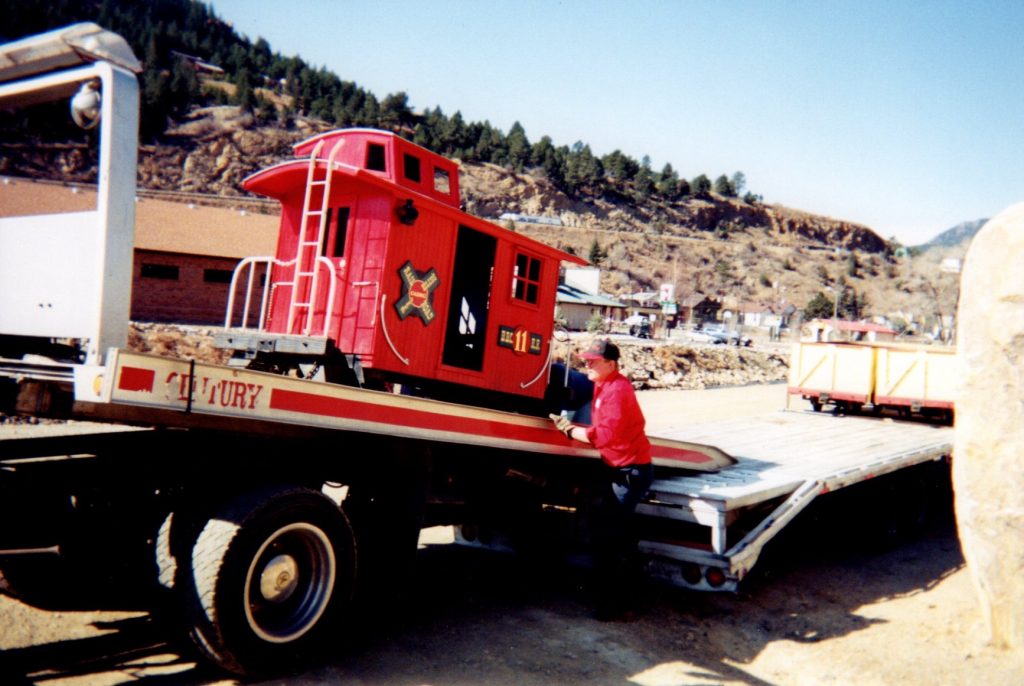

The photos above show the train being loaded for shipment to California, and a workman begins the long process of tearing up the rail for shipment to Alturas.

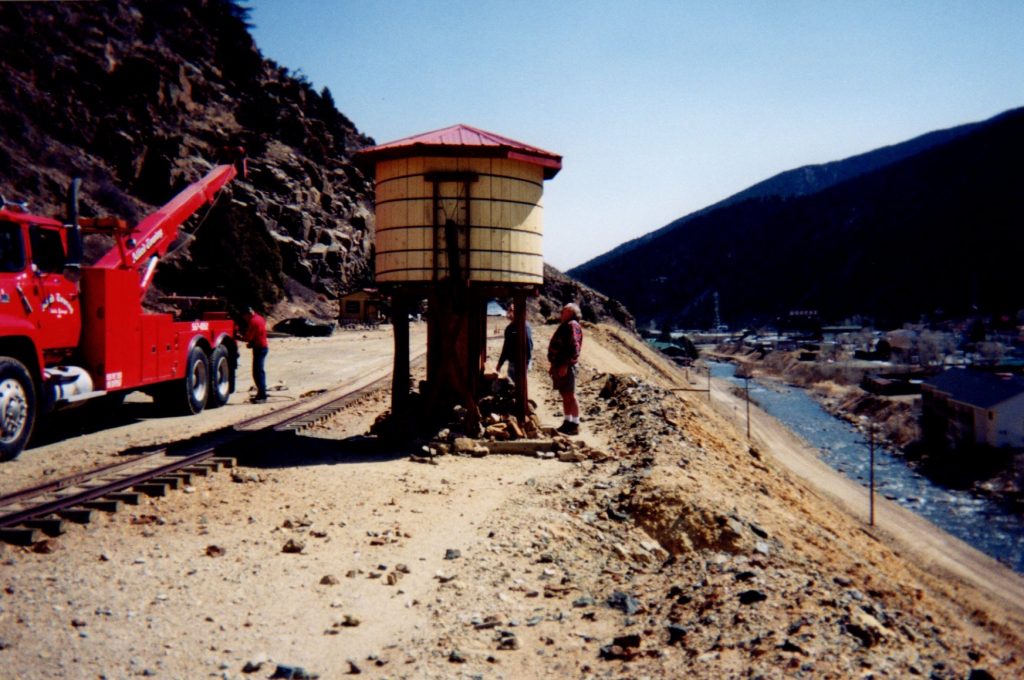
The water tower is lifted off its foundation by a tow truck in Colorado and moved to a truck for shipping. The photo on the right illustrates how the Argo Gold Mine Train and water tower were installed on a flat area of the tailing piles from the mine. Clear Creek and the mining town of Idaho Springs, CO, can be seen far below. The town sits at an elevation of 7,526′.
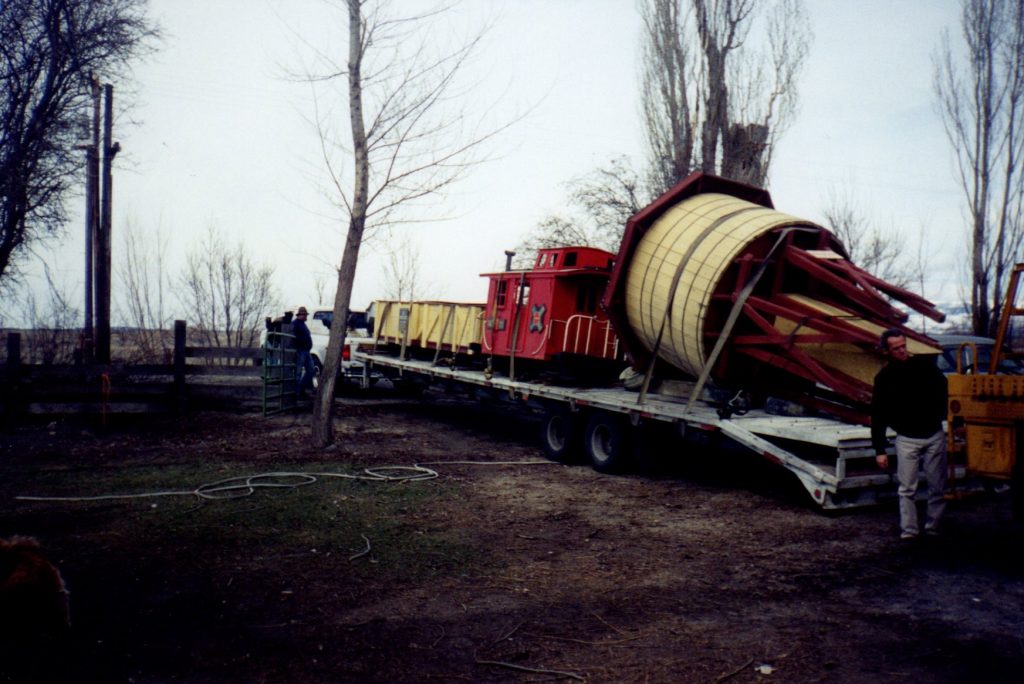
In April of 1999 the train engine, four cars, caboose, and water tower arrive at Stephen & Cheryl’s property near Alturas.
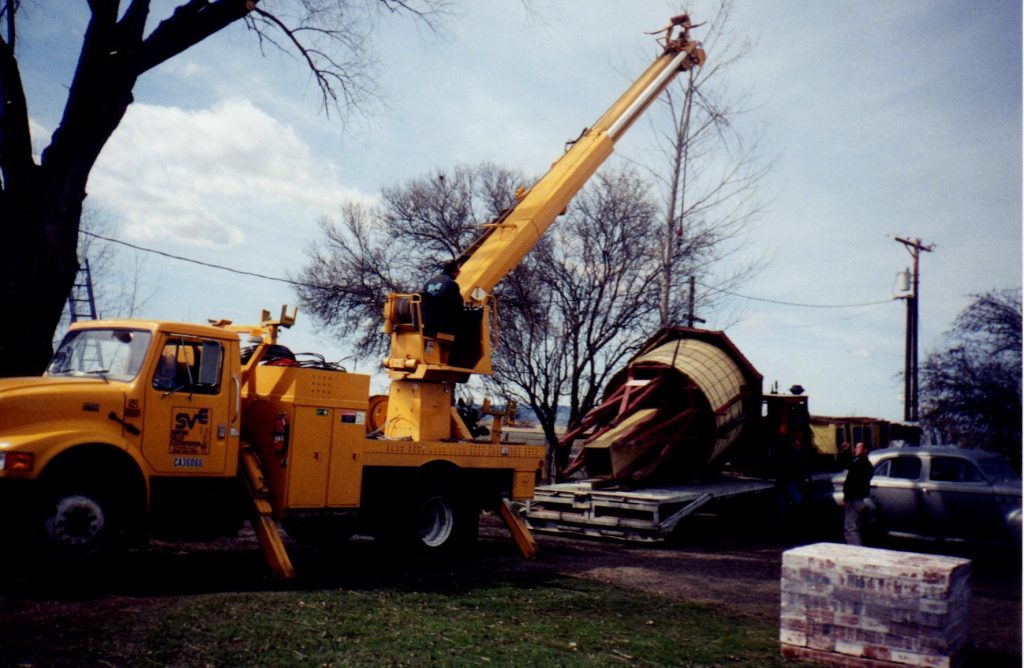

Jim Hays and Dan Silvera, of Surprise Valley Electric, helped out and unloaded the water tower from the delivery truck. It was left in the yard for the time being.
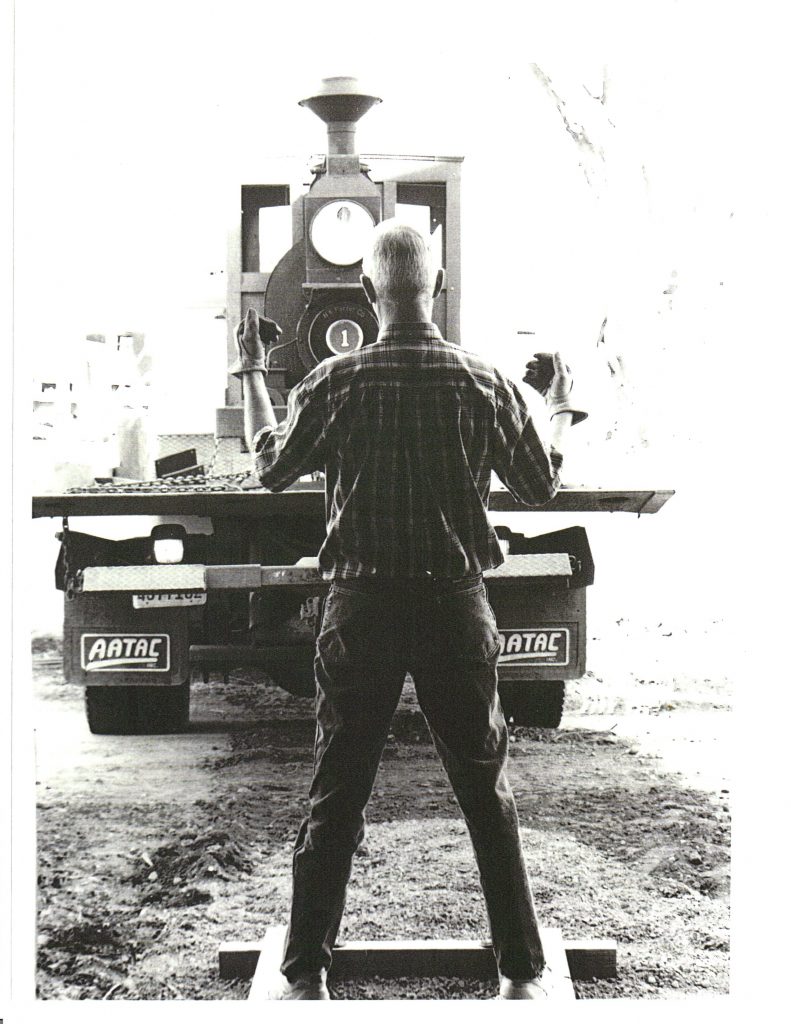
Stephen guides the train engine to the section of 18″ gauge track that he previously had installed on the barn floor. The gauge of the track refers to the distance between the inside of the railroad rails that the flanges of the train car wheels fit between.
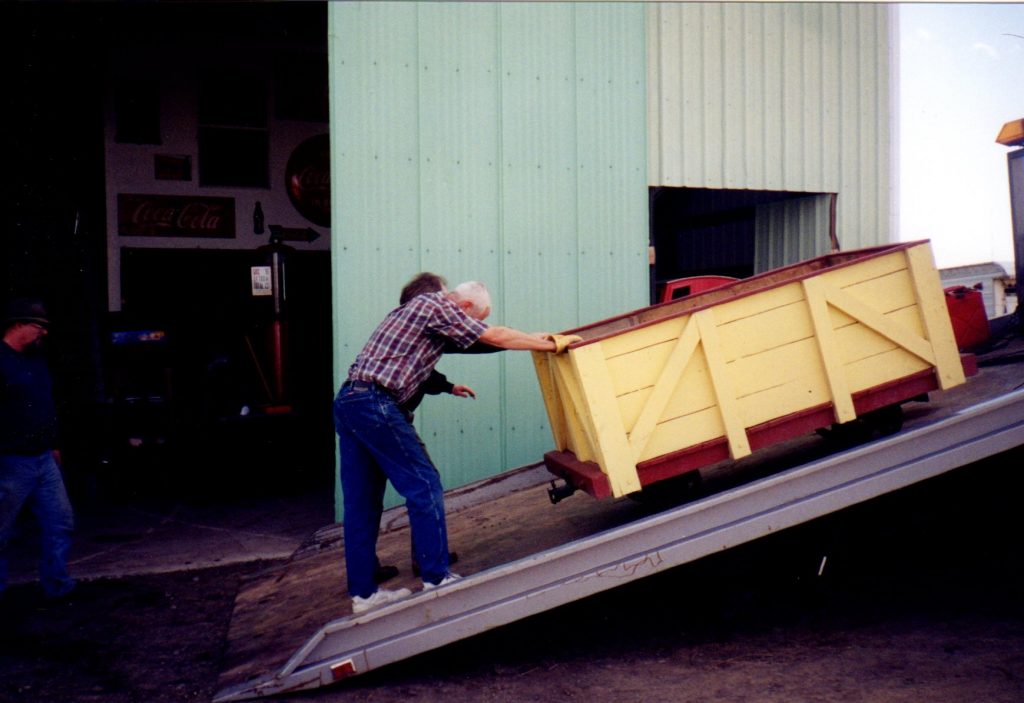

The last railroad car is unloaded from the truck, and then the unloading crew paused for a group photograph. From the left are Jim Windbigler, Rick Holloway, Stephen, and the truck drivers.
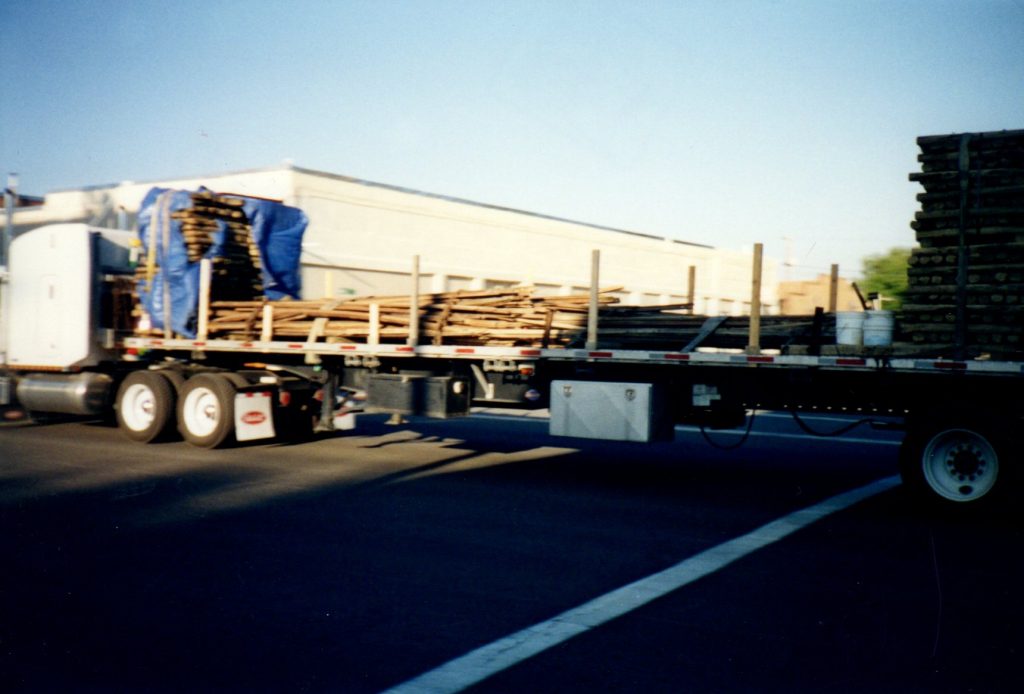

Later that same month, the second truck arrived from Colorado carrying the railroad rail and stacks of railroad ties.
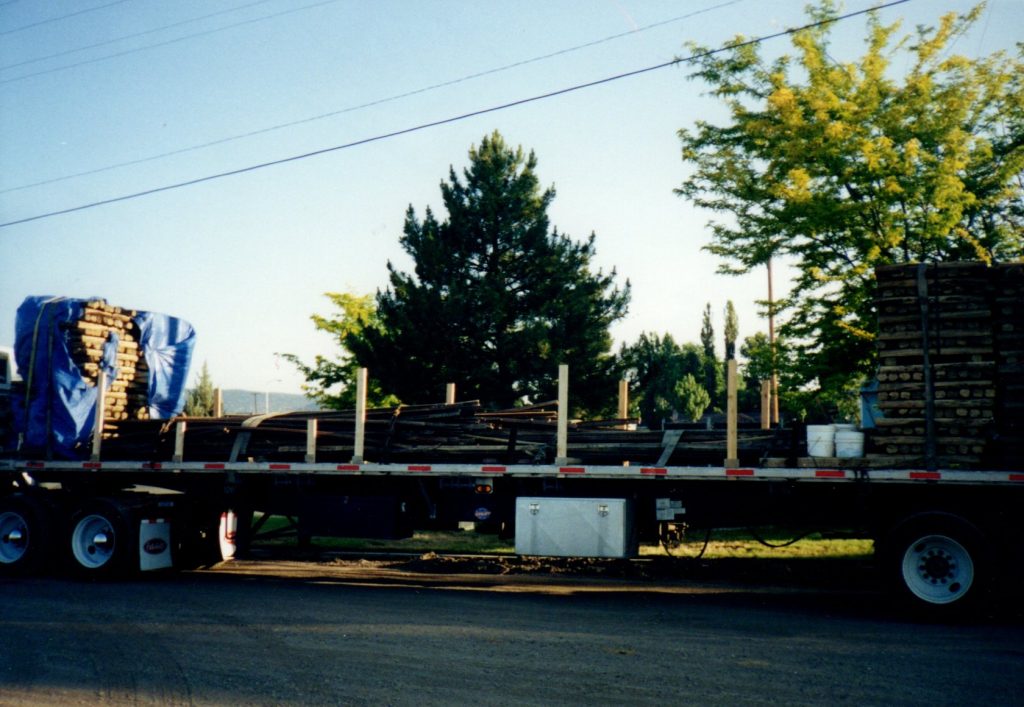
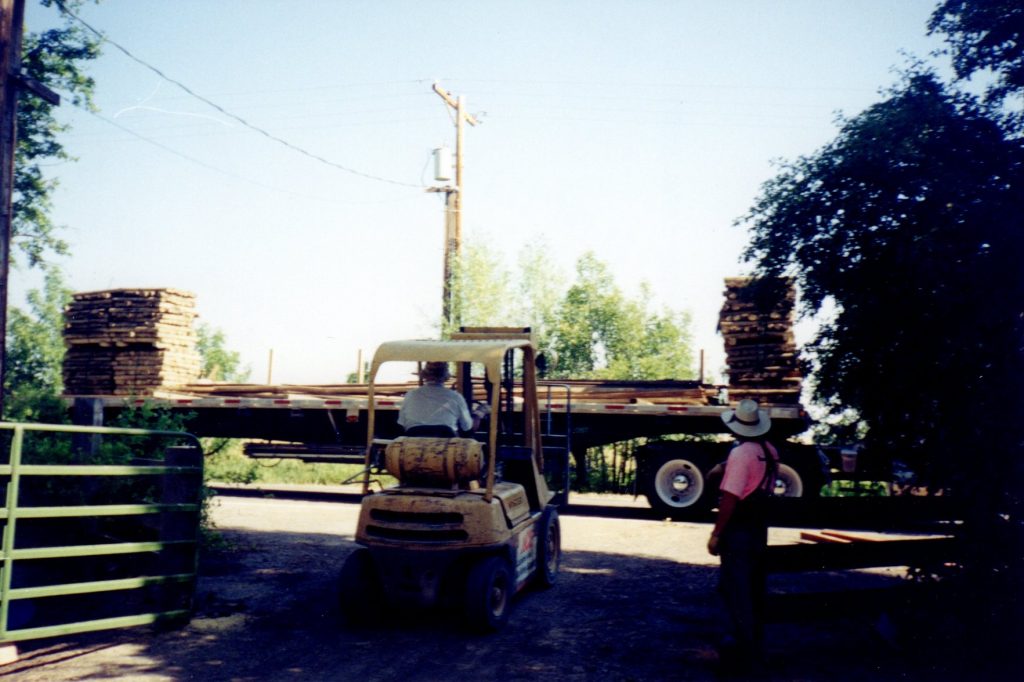
When Stephen installed this load of rail on his property, it was the fourth time it had been used. Originally it was installed in a gold mining operation in Colorado in the late 1800s. It was salvaged and installed in downtown Idaho Springs, CO, as part of a tourist train operation in 1991. Next it was torn up and moved up the mountain to the Argo Gold Mine as another tourist operation when it became a National Park. Finally Stephen had it torn up and moved to his property in Alturas. Some day it will probably move to a new operation somewhere.
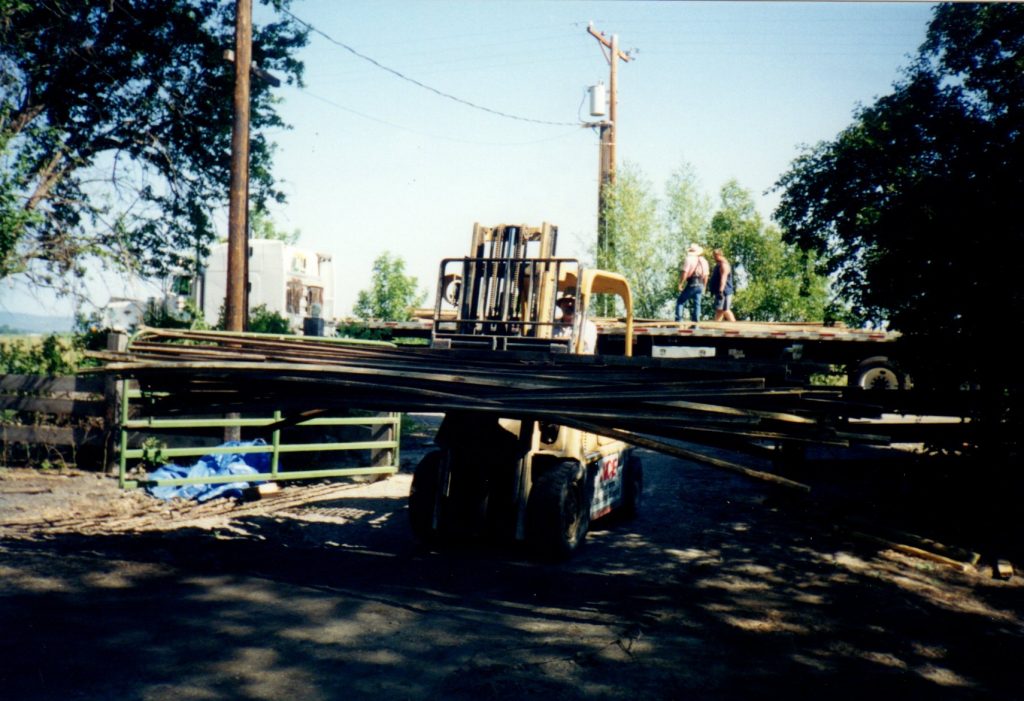
We rented a forklift to unload the 11 tons of 20 pound rail from the truck. Although the railroad ties were included in the purchase of the train, we could not use them with the new track installation on our property because the soil at the Argo Gold Mine National Park was laced with acid which caused the ties to start to rot. This acid is the reason the site was declared a superfund cleanup site by the Federal government. We were able to use the ties in various places in our garden for landscaping. We had to purchase new pressure treated ties for the installation of the track.

Eventually the yard in front of the barn filled with stacks of 20 pound rail. None of the curved rail could be used as it was. It had to be bent to match the curves of the track on the property as Stephen designed the route during the next five years. Park style trains are installed on mining rail ranging from 12 pound to 20 pound sizes. This is a standardized term for railroad rail. The term “20 pound rail” means that each piece of rail weighs 20 pounds per yard. So an 18′ length of 20 pound rail would weigh 120 pounds (18′ divided by 3 = 6 x 20 pounds).
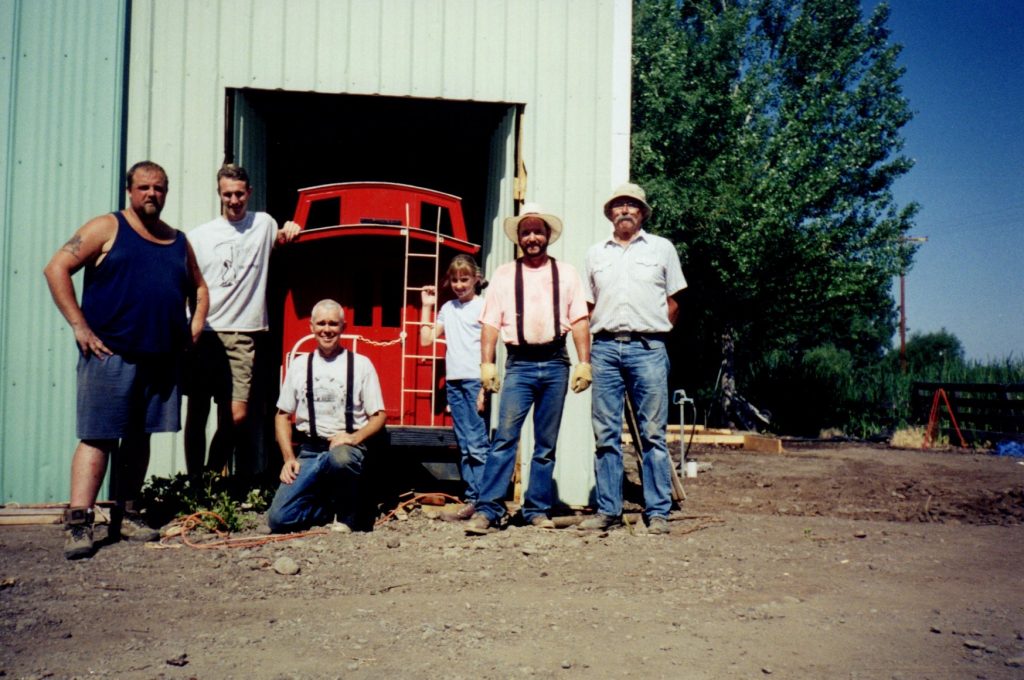
The unloading volunteers include, from left to right, the Idaho truck driver, Will Baker, Stephen, Whitney Baker, Paul Baker, and Lewis Williamson.

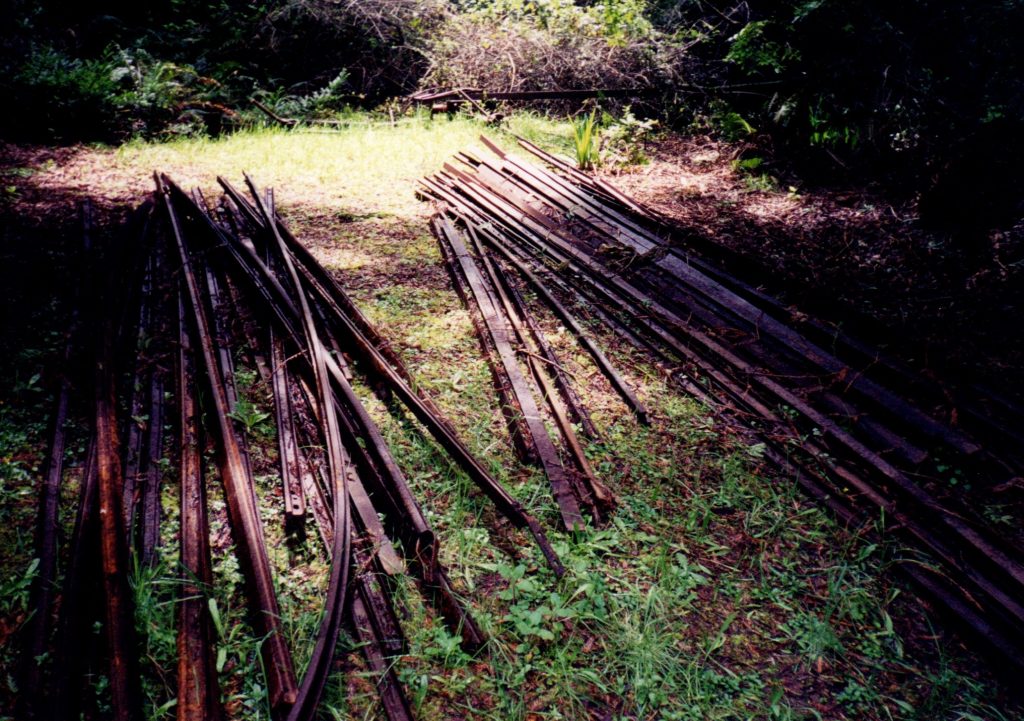
Above and below you will see photographs of five tons of 16 pound park train rail that Stephen located in Eureka, CA. The rail had been removed from a tourist train operation in Vallejo, CA, in 1969. It had been stored under the Redwood trees in Eureka for 30 years.

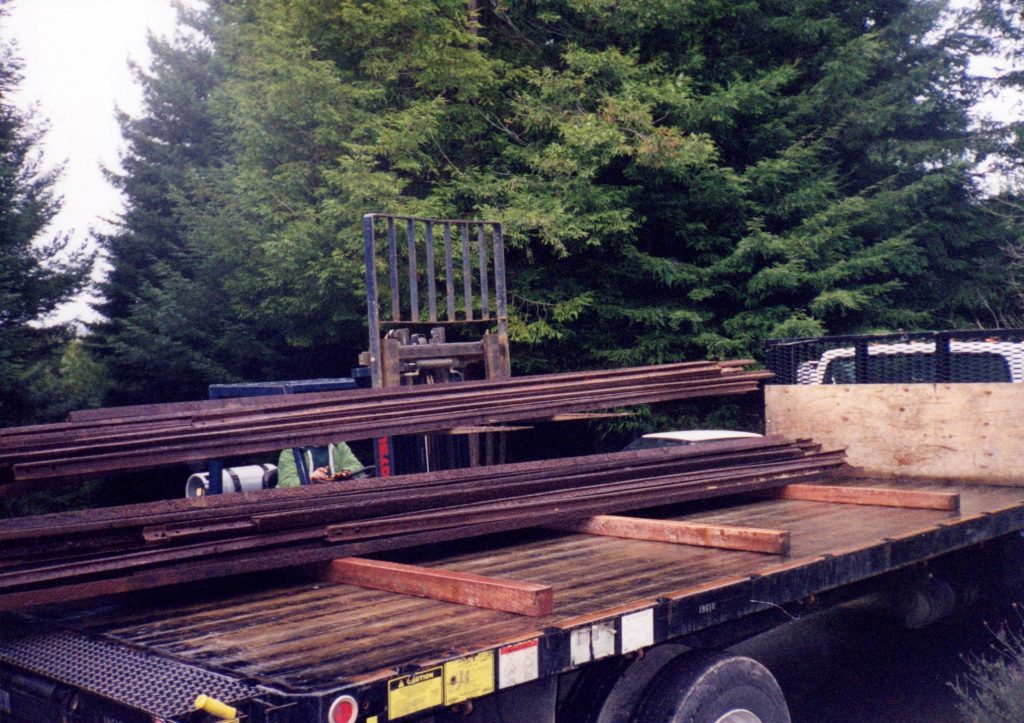
One of the more difficult aspects to installing a small park train is acquiring the rail. When Stephen bought the train, enough rail was included with it to complete about one third of the roadway he envisioned for his garden. As luck would have it, the same month Stephen bought the train, he saw a newspaper article advertising park train rail for sale in Eureka, CA. He bought the rail over the phone and headed to Eureka to haul it. If you click the drop down menu under “Argo Gold Mine Train” – “Articles About Argo Train” – “Quest for Park Train Rail” you will find an article Stephen wrote for the Grand Scales Quarterly railroad magazine about what a project moving this rail was.

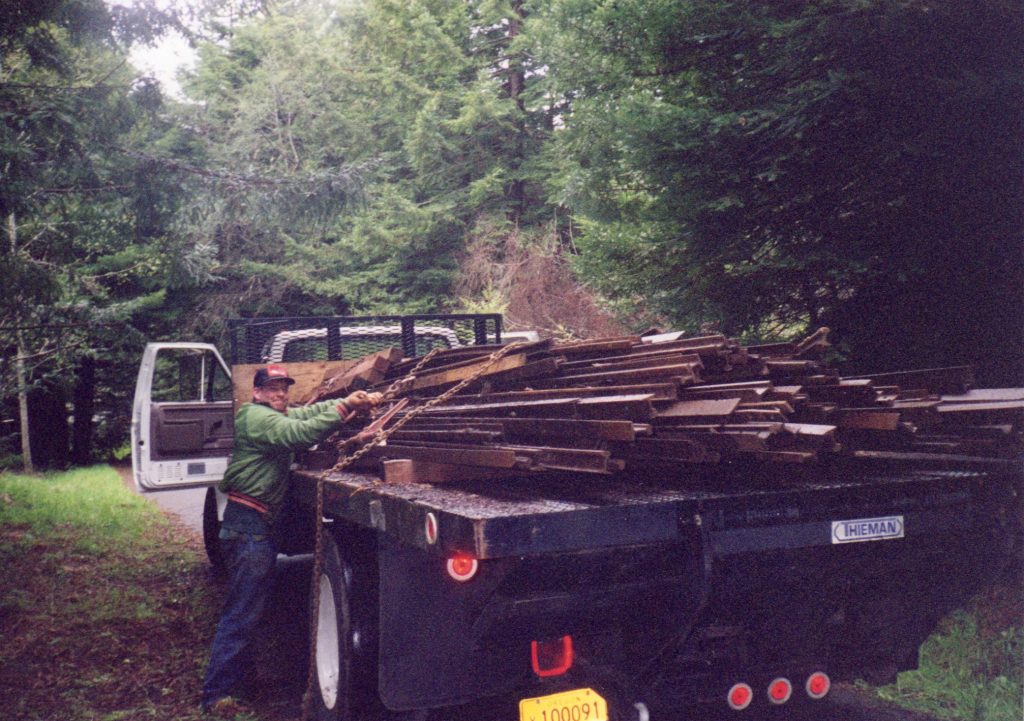
Some of the rail Stephen bought in Eureka was pitted due to the fact that it sat under acidic Redwood Trees for 30 years. Stephen drives the train slower on the section of track that has the pitted rail because the ride is not as smooth on this type of rail. But Stephen used it all because mining rail is the “liquid gold” of park strain operations. It is expensive and difficult to find.
